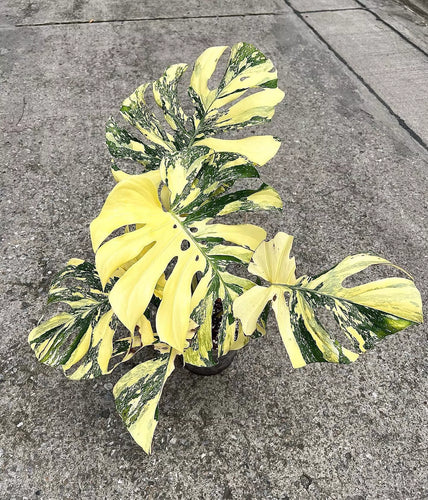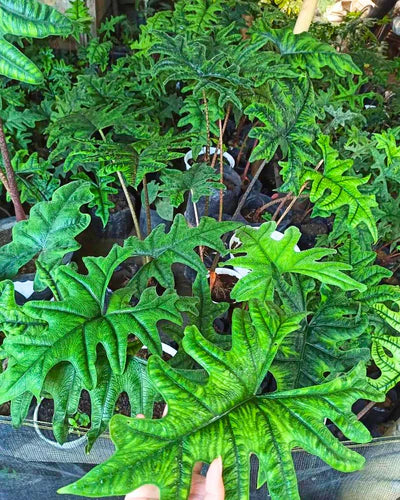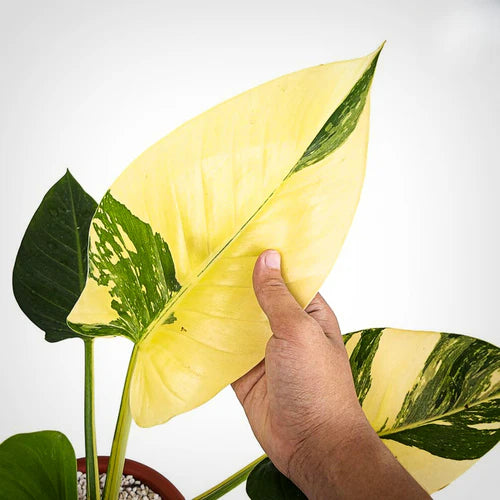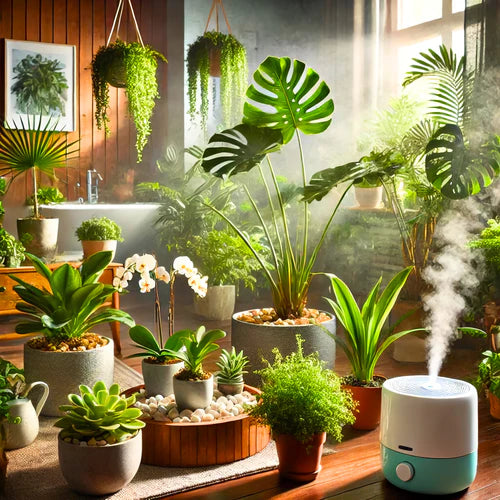How to Care and Grow Hoya Hindu Rope
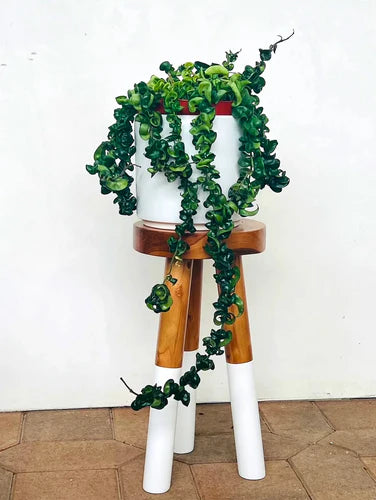
How to Care and Grow Hoya Hindu Rope: A Comprehensive Guide
Table of Contents:
- Introduction to Hoya Hindu Rope
- Understanding Hoya Carnosa 'Compacta'
- Ideal Growing Conditions for Hindu Rope Plant
- Watering Your Hoya Hindu Rope
- The Right Soil Mix for Hoya 'Krinkle Kurl'
- Light Requirements for Optimal Growth
- Fertilizing Your Hindu Rope Hoya
- Pruning and Maintenance Tips
- Propagating Hindu Rope Plant
- Troubleshooting Common Problems
- Styling and Displaying Your Hoya Hindu Rope
- Health Benefits of Indoor Hoyas
- Where to Find Hindu Rope Plant Near Me
- The Unique Charm of Hoya 'Krinkle Kurl'
- Conclusion: Thriving with Your Hoya Hindu Rope
1. Introduction to Hoya Hindu Rope
The Hoya Hindu Rope, scientifically known as Hoya carnosa 'Compacta', is a stunning and unique houseplant, famous for its twisted and curly leaves. This guide will help you understand how to care for and grow this beautiful plant effectively.
2. Understanding Hoya Carnosa 'Compacta'
Hoya Hindu Rope, also known as Hindu rope hoya or Hoya 'Krinkle Kurl', is a cultivar of Hoya carnosa. It's known for its thick, waxy leaves that curl and twist, forming a rope-like appearance. This plant not only adds a decorative touch but is also relatively easy to care for.
3. Ideal Growing Conditions for Hindu Rope Plant
To thrive, the Hoya Hindu Rope requires certain conditions:
- Temperature: Prefers warm and consistent temperatures.
- Humidity: Enjoys high humidity levels.
- Location: Does well in bright, indirect sunlight.
4. Watering Your Hoya Hindu Rope
Proper watering is crucial for the health of your Hoya Hindu Rope. Here are some tips:
- Watering Schedule: Water when the top inch of the soil feels dry. Overwatering can lead to root rot.
- Quality of Water: Use room temperature water, and if possible, let it sit for a day before using to allow chlorine to evaporate.
- Monitoring Moisture: Consider using a moisture meter to check the soil's moisture level accurately.
5. The Right Soil Mix for Hoya 'Krinkle Kurl'
The right soil mix is essential for the Hoya Hindu Rope:
- Soil Composition: A well-draining, airy potting mix is ideal. You can create a mix with peat moss, perlite, and orchid bark or opt for a pre-mixed aroid mix.
- Drainage: Ensure your pot has good drainage to prevent water accumulation.
6. Light Requirements for Optimal Growth
Lighting is a key factor in the growth of Hoya Hindu Rope:
- Ideal Light: Bright, indirect light is best. Avoid direct sunlight as it can scorch the leaves.
- Artificial Lighting: If natural light is insufficient, consider supplementing with grow lights.
7. Fertilizing Your Hindu Rope Hoya
Fertilization helps in promoting healthy growth:
- Type of Fertilizer: Use a balanced, water-soluble fertilizer. During the growing season, slow-release fertilizer can be beneficial.
- Frequency: Fertilize every 4-6 weeks during the growing season and reduce in the winter months.
8. Pruning and Maintenance Tips
Regular maintenance ensures your Hoya stays healthy:
- Pruning: Trim any dead or yellowing leaves. Pruning encourages new growth.
- Cleaning Leaves: Gently wipe the leaves with a damp cloth to remove dust.
9. Propagating Hindu Rope Plant
Propagating Hoya Hindu Rope is a rewarding experience:
- Method: Stem cuttings are the most effective. Cut a healthy stem with a few leaves and nodes.
- Rooting Medium: Plant the cutting in a mix of peat and perlite or use sphagnum moss for rooting.
- Care: Keep the medium moist and provide indirect light until roots develop.
10. Troubleshooting Common Problems
Even with the best care, your Hoya may face some issues:
- Yellowing Leaves: Usually a sign of overwatering or poor drainage.
- Pests: Look out for aphids or spider mites. Treat infestations promptly with insecticidal soap or neem oil.
- Slow Growth: Insufficient light or nutrients could be the cause. Evaluate and adjust your care routine.
11. Styling and Displaying Your Hoya Hindu Rope
Hoya Hindu Rope's unique appearance makes it a fantastic decorative plant:
- Hanging Baskets: Showcase its cascading vines in a hanging basket.
- Shelving: Place it on a high shelf and let the vines trail down.
12. Health Benefits of Indoor Hoyas
Hoyas are not just visually appealing; they also purify the air by removing toxins, contributing to a healthier indoor environment.
13. Where to Find Hindu Rope Plant Near Me
Looking for a Hindu rope plant? Visit local nurseries or check out online plant stores. Plant Vault offers a selection of quality Hoya Hindu Rope plants.
14. The Unique Charm of Hoya 'Krinkle Kurl'
The Hoya 'Krinkle Kurl' stands out with its unique, curly leaves, making it a must-have for plant enthusiasts and collectors.
15. Conclusion: Thriving with Your Hoya Hindu Rope
Caring for a Hoya Hindu Rope can be a deeply gratifying experience. With the right care, these stunning plants can thrive and become a centerpiece in your home. Embrace the journey of growing and caring for this unique and beautiful plant.
Your Essential Shopping List for Hoya Care:
- Humidifier
- Aroid Mix
- Moisture Meter
- Grow Lights
- Light Meter
- Slow Release Fertilizer
- Sphagnum Moss
- Neem Oil
- Insecticidal Soap
- Bonide Systemic Houseplant Insect Control
- Perlite
- Clear Moss Pole for Climbing Plants
Hoya Hindu Rope Frequently Asked Questions
1. Is a Hindu Rope rare?
A: The Hoya Hindu Rope, or Hoya carnosa 'Compacta', is considered somewhat rare due to its unique appearance and growth habit. While not the rarest plant, it's sought after by collectors and plant enthusiasts for its distinctive, curly leaves and its cascading growth pattern.
2. Where can I buy Hindu Rope?
A: You can find Hindu Rope plants at specialty plant nurseries, garden centers, and online plant stores. For a quality selection, consider checking out Plant Vault, which offers healthy, well-cared-for Hoya Hindu Rope plants.
3. What is another name for Hindu rope?
A: The Hindu rope plant is also known by several other names, including Hoya Carnosa 'Compacta', Hoya 'Krinkle Kurl', and simply as the compact Hoya. Its unique appearance has led to these various nicknames that reflect its intriguing rope-like, curly foliage.
4. How do I get my Hindu rope to bloom?
A: To encourage your Hoya Hindu Rope to bloom, provide it with the following conditions:
- Bright, Indirect Light: Adequate lighting is crucial for bloom development.
- Proper Watering: Allow the soil to dry out between waterings.
- Right Temperature: Keep it in a warm environment, especially during the growing season.
- Fertilization: Use a balanced fertilizer during the spring and summer months.
5. Why is it called Hindu rope?
A: The name "Hindu rope" comes from the appearance of the plant. Its long, cascading vines and tightly curled leaves resemble a rope, and the "Hindu" part of the name may refer to the exotic and mysterious appeal that aligns with the Western perception of Eastern aesthetics. However, there's no specific cultural connection to the Hindu religion or region.
6. Are Hoya Hindu Rope Plants slow growing?
A: Yes, Hoya Hindu Rope plants are known for their slow growth rate. This characteristic makes them easy to care for but requires patience if you're looking forward to significant growth or blooms. Providing optimal growing conditions can help encourage growth, although it will still be relatively slow compared to other houseplants.
7. Why is my Hindu Rope Wrinkled?
A: Wrinkling in Hoya Hindu Rope leaves often indicates a watering issue. It's usually a sign of underwatering. When the plant doesn’t receive enough water, the leaves can start to shrivel or wrinkle. Check the soil moisture and adjust your watering schedule accordingly. Make sure the plant is in well-draining soil and that it's not sitting in water.
8. Is Hindu Rope poisonous to cats?
A: The Hoya Hindu Rope is generally considered non-toxic to cats and dogs. However, it's always a good idea to keep houseplants out of reach of pets, as chewing on the leaves can sometimes cause mild irritation or an upset stomach in sensitive pets.
9. Is the Hindu Rope plant a succulent?
A: The Hoya Hindu Rope is often thought of as a succulent due to its thick, waxy leaves, but it is technically a tropical plant. It shares some care similarities with succulents, such as the need for well-draining soil and not being overwatered. However, it prefers more humidity and indirect light compared to most succulents.
10: Is Hindu rope offensive?
A: The term 'Hindu rope' is a common name for the Hoya carnosa 'Compacta' due to its unique rope-like appearance. There's no known offensive or derogatory connotation associated with this name, as it simply refers to the plant's physical characteristics.
11: Does the Hindu rope flower?
A: Yes, the Hoya Hindu Rope can produce flowers under the right conditions. These blooms are star-shaped, often pink, and have a sweet fragrance. Achieving flowering requires maturity, ample light, and proper care.
12: How to propagate Hindu rope from cutting?
A: To propagate a Hindu rope from a cutting, take a healthy stem cutting with a few leaves. Place it in water or a moist soil mix until roots develop. Once rooted, plant it in a suitable potting mix.
13: How to clean Hindu rope plant?
A: Clean your Hindu rope plant by gently wiping the leaves with a soft, damp cloth. This will remove dust and help the plant breathe and photosynthesize more efficiently.
14: When to repot Hindu rope?
A: Repot your Hindu rope plant when it becomes root-bound or outgrows its current pot, typically every 2-3 years. Choose a pot that is slightly larger than the current one and use fresh, well-draining soil.
15: Why is my Hindu rope not growing?
A: Slow or stagnant growth in Hindu rope plants can be due to several factors, including inadequate light, improper watering, or nutrient deficiencies. Evaluate and adjust your care routine to promote growth.


